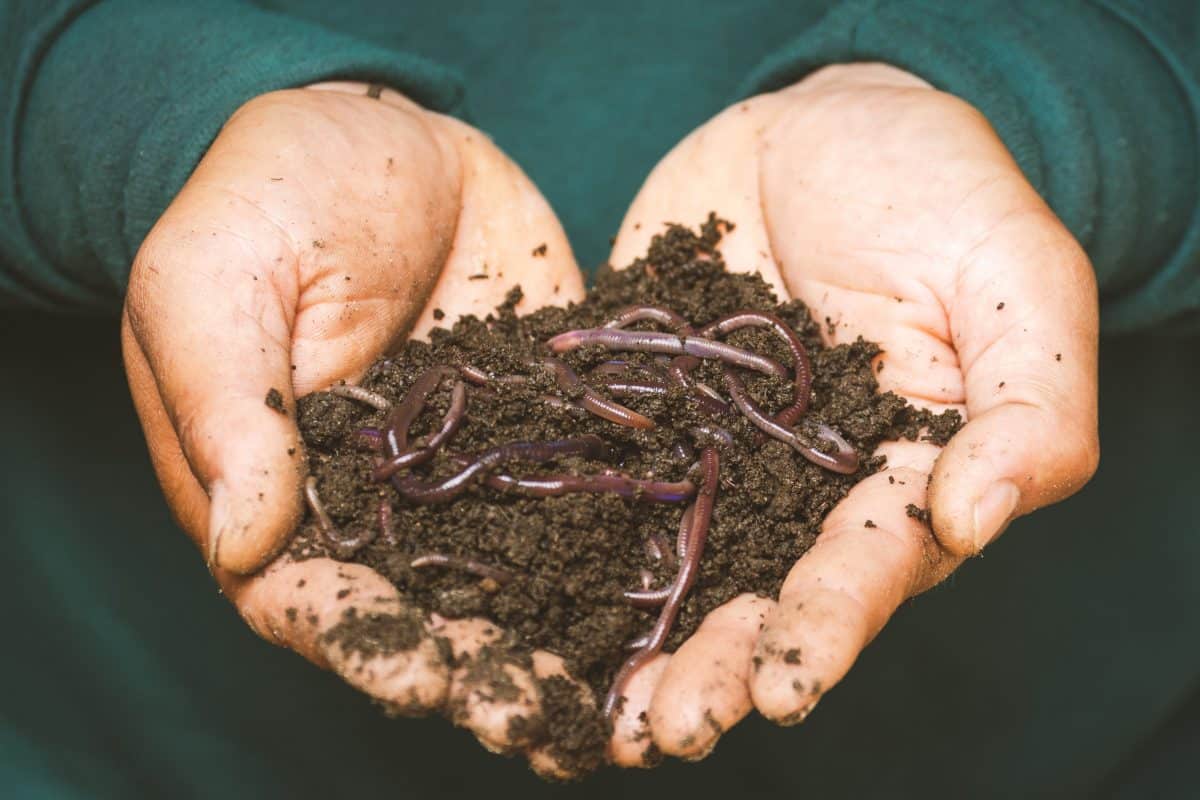
Share this post!
Do you Vermicompost? In Verm with the Worm (part 1) we discussed the difference between composting and vermicomposting; being that vermicomposting uses worms in the break down of organic material. Now we want to share the benefits of vermicomposting and a handful of reasons why utilizing these little crawlers is, in fact, a better way to recycle your household waste.
- You can help reduce your carbon footprint: Worms can help you reduce your household waste by a third!
- Stop using those commercial insecticides and save the bees: Researchers found that vermicompost significantly improves a plant’s resistance to insect attacks by aphids, caterpillars, and mealy bugs, thus decreasing pest damage.
- Improve the nutritional value of the food you grow: Vermicompost is rich in NPK (nitrogen, phosphorus, and potassium), micronutrients, beneficial soil microbes, plant growth hormones, and enzymes and helps deliver these vital nutrients to the plant faster than conventional compost.
- Remove toxins from the soil: Earthworms can effectively biodegrade toxins, including heavy metals such as nickel, chromium, vanadium, and lead, and can even remediate arsenic and mercury.
- Grow bigger plants and improve your yield: A vermicompost tea can dramatically increase plant growth and yield by up to 50%!
- Reduce the number of human pathogens in soil: A study found that when worms were introduced to biosolids infected with E. coli, salmonella, and other harmful organisms, the worms eliminated the pathogens, making the vermicompost safe for handling and application to plants.
- You’ve got something fun to talk about at your next BBQ!
If you read our first post and you’re reading this, you’re probably a fan of utilizing worms in helping recycle your household’s organic waste. And since we’ve already sold you on the fantastic benefits of vermicomposting, here are some other fun facts about our little vermicomposting friends, worms!
- Worms have 5 hearts.
- Red worms are about 3-1/2 inches long.
- Contrary to common belief, if you cut a worm in half, it will die.
- Worms get their nourishment from the microorganisms that eat the waste, not from the actual organic waste.
- Worms do not have lungs. They breathe through their skin.
- Worms do not have teeth. They grind up food using grit in their gizzards. (Washed eggshells are an excellent source of grit.)
- Worms do not have eyes, but they can detect light and vibrations.
- Red worms need to be in an environment where the temperature is between 55-77 degrees.
- Produce scraps are high in nitrogen and cardboard/paper is primarily carbon. Your compost bin should have equal nitrogen (green material) to carbon (brown material).
- Red wigglers are NOT fans of citrus and onion. Don’t’ feed them meat, dairy, oils or sauces.
- If you are composting correctly, there should be no unpleasant odors. If there is a smell, it’s usually because the bin is too wet. It may also be due to the fact that there is not enough oxygen circulating, or that the worms have too much food.
Composting not only improves the quality of soil it also aids in reducing your carbon footprint enabling you to grow your own food in your own backyard!
NTI stands for better health through better nutrition. We’re on a mission: teach people how to eat for health and explain the science behind it. We teach the teachers. And the teachers are making a difference. https://ntischool.com/
*Original blog written by Rita Wilhelm; May 28, 2014
Image: Image by Sippakorn Yamkasikorn is free for use by Pexels
Share this post!




















